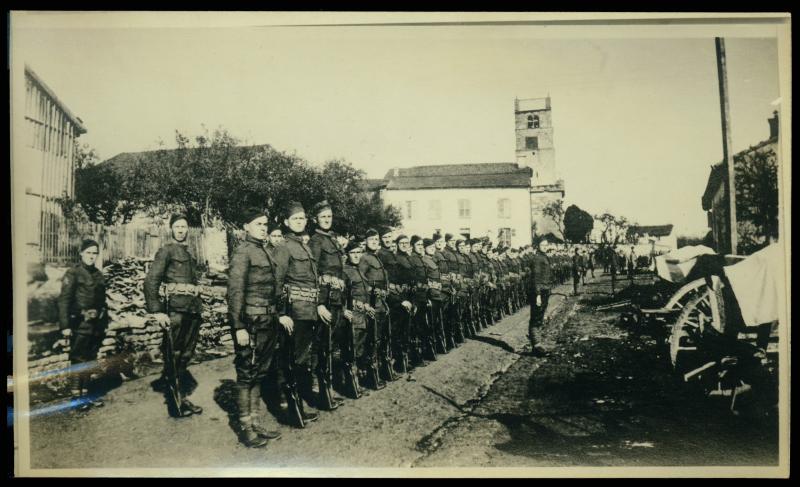The war that engulfed Europe between 1914 and 1918 was so massive, widespread, and deadly, that it became known simply as the Great War — and, when an even greater war followed a few decades later, World War I. Although the United States was only involved in the fighting for a year and a half, North Carolina sent 86,457 soldiers overseas. Three military training camps were built in the state — Camp Greene near Charlotte, Camp Bragg near Fayetteville, and Camp Polk near Raleigh. In Wilmington, shipyards built warships for the Navy, while furniture workers in High Point made airplane propellers, and artillery shells were made in Raleigh. The state’s textile mills made blankets, tents, and socks for soldiers.
In this chapter, you’ll learn the reasons for American involvement in the war, consider the experiences of soldiers, and examine the impact of the worldwide influenza pandemic that followed on the heels of the war in 1919.
Section Contents
- Timeline of World War I
- The United States and World War I
- Propaganda and Public Opinion in the First World War
- "Over There"
- The War and German Americans
- The Increasing Power of Destruction: military technology in World War I
- Primary Source: The Importance of Camp Bragg
- Primary Source: Speech on Conditions at Camp Greene
- Primary Source: Diary of a Doughboy
- Primary Source: Letter Home from the American Expeditionary Force
- Primary Source: Governor Bickett's speech to the Deserters of Ashe County
- Rescue at Sea
- North Carolina and the "Blue Death": The Flu Epidemic of 1918
- Primary Source: Bulletin on Stopping the Spread of Influenza
- Primary Source: Speech on Nationalism from Warren Harding
- African American Involvement in World War I
- The Treaty of Versailles
